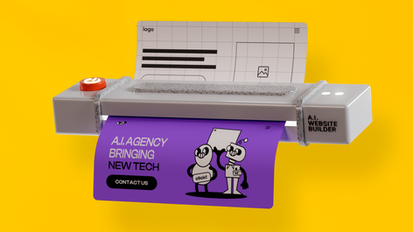Designer Website in 3 Steps
Getting Started with Designer Website
Designer Website
In today’s digital age, having a strong online presence is essential for businesses and individuals alike. Whether you are looking to create a personal blog, launch an e-commerce site, or establish an online portfolio, finding the right web hosting provider is crucial for ensuring your website is secure, reliable, and easily accessible to users. With so many web hosting options available on the market, it can be overwhelming to choose the best provider for your needs. In this article, we will compare various web hosting options and help you make an informed decision.

Quick Designer Website Guide
Designer Website
Website builders are online tools that allow users to create and customize their own websites without the need for coding or design experience. These platforms offer a range of templates, drag-and-drop features, and other tools that make it easy for even the most technologically-challenged individuals to create a professional-looking website. For small businesses, website builders offer a cost-effective and user-friendly solution to establishing an online presence.
There are many website builders available on the market, each with its own unique features and pricing options. When choosing a website builder for your small business, it’s important to consider factors such as ease of use, customization options, mobile responsiveness, and customer support. To help you make an informed decision, here are some of the top website builders for small businesses:
1. Wix: Wix is one of the most popular website builders on the market, known for its user-friendly interface and extensive customization options. With Wix, small business owners can choose from hundreds of templates, customize their site with drag-and-drop tools, and even add features such as e-commerce functionality and contact forms. Wix also offers excellent customer support and a mobile-responsive design, making it a great option for small businesses looking to establish a professional online presence.
2. Squarespace: Squarespace is another website builder that is ideal for small businesses looking for a sleek and modern design. Squarespace offers a range of professionally-designed templates that can be easily customized to suit your brand. The platform also includes features such as e-commerce functionality, SEO tools, and analytics tracking. While Squarespace may have a steeper learning curve than some other website builders, its beautiful design options make it worth the investment for small businesses looking to make a strong visual impression online.
3. Shopify: If your small business focuses on e-commerce, Shopify is a top choice for building an online store. Shopify offers a range of customizable templates, payment processing options, and inventory management tools to help small businesses succeed in the online marketplace. With Shopify, small business owners can easily set up their store, add products, and track sales all in one platform. While Shopify does have a monthly fee, the robust features and support make it a worthwhile investment for small businesses looking to sell products online.
4. WordPress: WordPress is a popular website builder that is widely used by small businesses and bloggers alike. With WordPress, users have access to thousands of themes and plugins that can help customize their site to fit their needs. While WordPress does have a steeper learning curve than some other website builders, its flexibility and scalability make it a powerful tool for small businesses looking to grow their online presence. WordPress also offers excellent SEO capabilities, making it a great choice for businesses looking to increase their visibility in search engine results.
5. Weebly: Weebly is an affordable website builder that is perfect for small businesses on a budget. Weebly offers a range of customizable templates, drag-and-drop tools, and e-commerce functionality to help small businesses create a professional online presence. Weebly also offers built-in SEO tools, analytics tracking, and mobile responsiveness, making it a great all-in-one solution for small businesses looking to launch their website quickly and easily.
Choosing a Domain Name
One of the first steps in building a website is choosing a domain name. Your domain name is the web address that users will type into their browser to access your site. When selecting a domain name, it is essential to choose a name that is easy to remember, relevant to your brand or business, and available for registration. It is also important to consider the domain extension, such as .com, .org, or .net, as different extensions can convey different meanings to users.
Selecting a Hosting Provider
After selecting a domain name, the next step is to choose a hosting provider for your website. A hosting provider is a company that stores your website files on a server and makes them accessible to users on the internet. When selecting a hosting provider, it is essential to consider factors such as uptime, security, storage space, bandwidth, and customer support. It is also crucial to choose a hosting plan that aligns with the needs and goals of your website.
Designing the Layout
Once you have registered your domain name and selected a hosting provider, the next step is to design the layout of your website. The layout of your website includes elements such as the header, footer, navigation menu, content area, and sidebar. When designing the layout of your website, it is essential to consider factors such as usability, accessibility, and aesthetics. It is also important to ensure that your website is responsive, meaning it adapts to different screen sizes and devices, such as desktops, laptops, tablets, and smartphones.
Creating Content
After designing the layout of your website, the next step is to create content for your site. Content includes text, images, videos, and other multimedia elements that communicate your message to your target audience. When creating content for your website, it is essential to consider factors such as readability, relevance, and search engine optimization (SEO). SEO is the process of improving your website’s visibility in search engine results pages, which can help drive organic traffic to your site.
Adding Functionality
In addition to design and content, websites often include functionality that enhances the user experience and enables users to interact with the site. Examples of website functionality include contact forms, social media integration, e-commerce capabilities, and multimedia players. When adding functionality to your website, it is essential to consider factors such as usability, accessibility, and security. It is also important to test your website regularly to ensure that all functionality is working correctly.
Optimizing for Performance
Once you have designed your website, created content, and added functionality, the final step is to optimize your site for performance. Website performance refers to factors such as speed, loading times, and responsiveness, which can affect user experience and search engine rankings. To optimize your website for performance, you can use tools such as Google PageSpeed Insights and GTmetrix to identify and fix performance issues. It is also crucial to regularly update your website, monitor performance metrics, and make necessary adjustments to ensure that your site is running smoothly.

How Designer Website Works
Designer Website
In conclusion, the cost of building a website can vary significantly depending on various factors such as the type of website, design, development, CMS, domain and hosting, maintenance, and additional features. It is essential to carefully consider your requirements and budget constraints to ensure that you get the best value for your investment. Working with experienced professionals and getting multiple quotes can help you determine the cost of building a website that aligns with your goals and objectives. Remember that building a website is an investment in your online presence and can have a significant impact on your brand’s success in the digital landscape.

